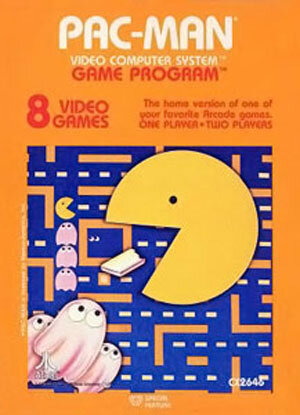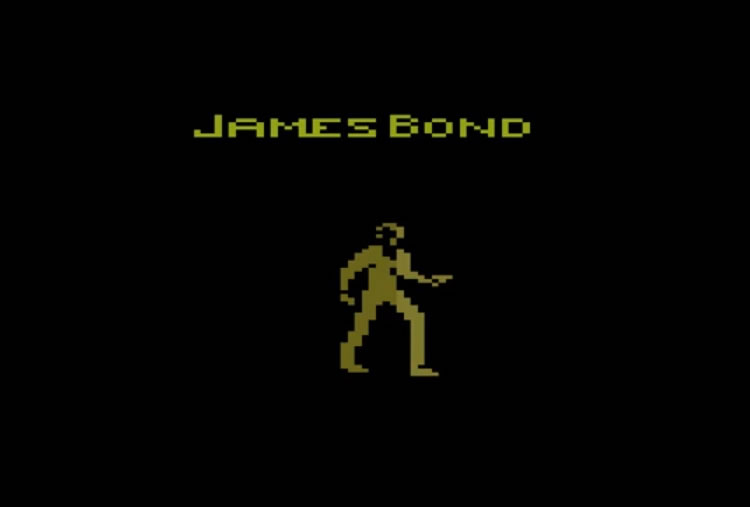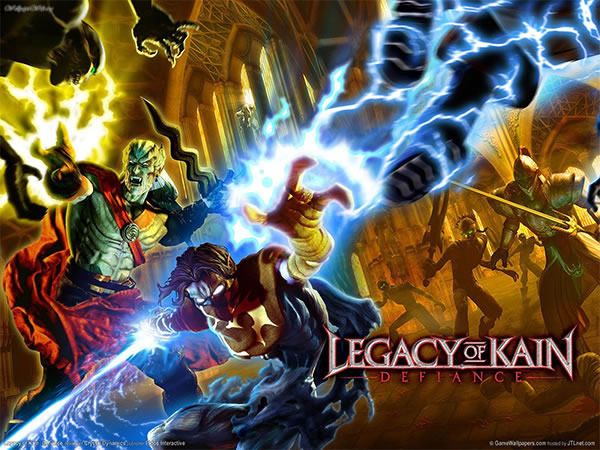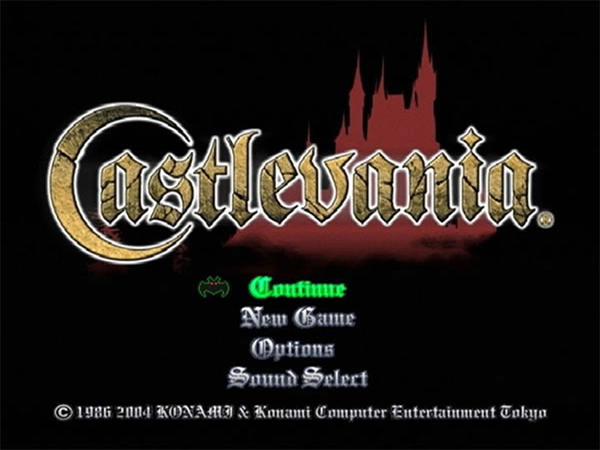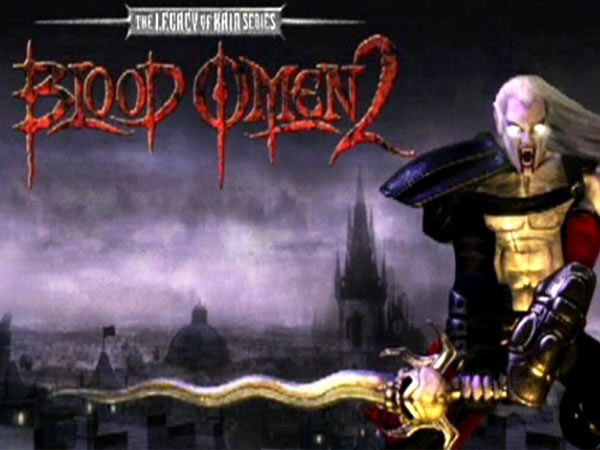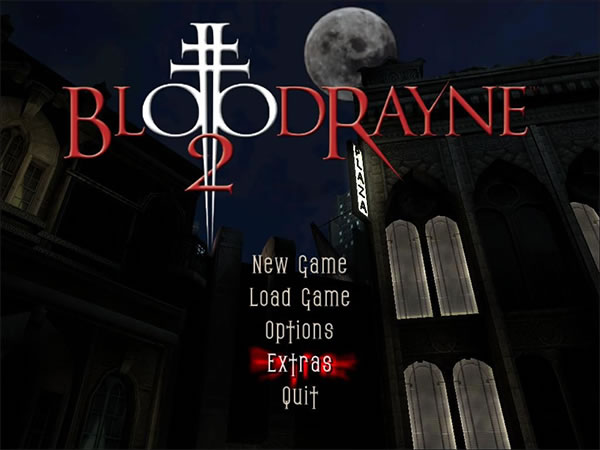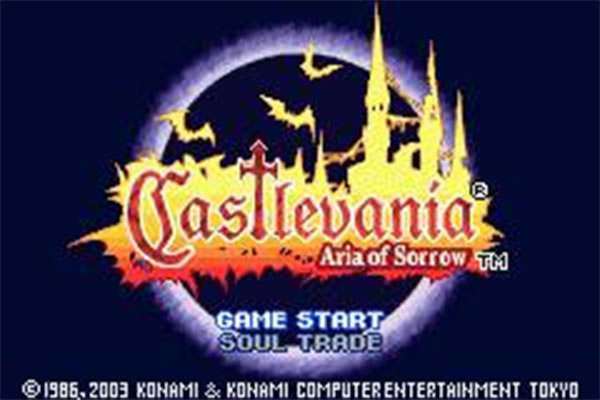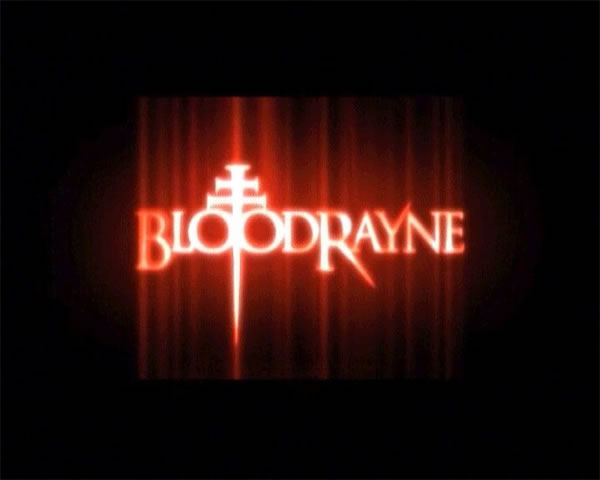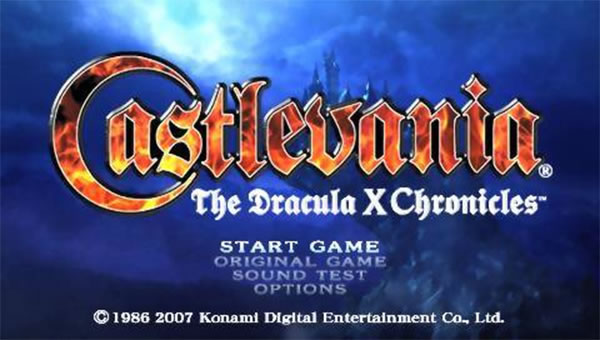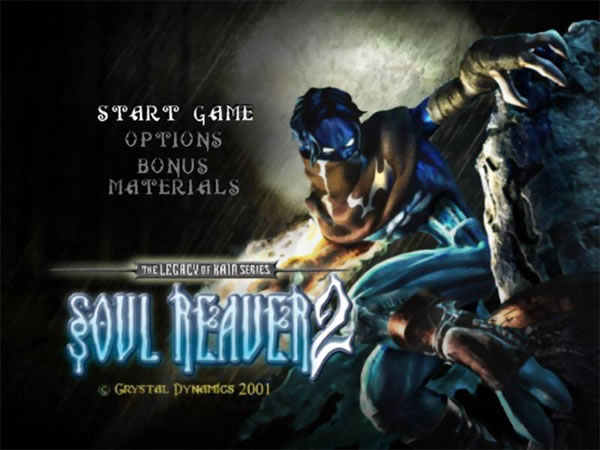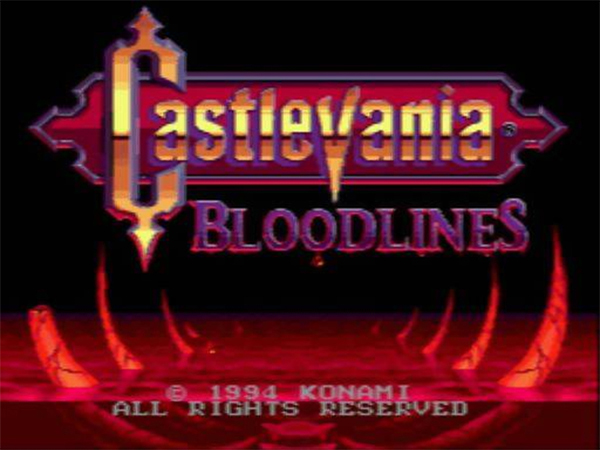- CLASSIC MAGAZINES
- REVIEW CREW
A show recapping what critics thought back
when classic games first came out! - NEXT GENERATION'S BEST & WORST
From the worst 1-star reviews to the best
5-stars can offer, this is Next Generation! - NINTENDO POWER (ARCHIVE)
Experience a variety of shows looking at the
often baffling history of Nintendo Power! - MAGAZINE RETROSPECTIVE
We're looking at the absolutely true history of
some of the most iconic game magazines ever! - SUPER PLAY'S TOP 600
The longest and most ambitious Super NES
countdown on the internet! - THEY SAID WHAT?
Debunking predictions and gossip found
in classic video game magazines! - NEXT GENERATION UNCOVERED
Cyril is back in this spin-off series, featuring the
cover critic review the art of Next Generation! - HARDCORE GAMER MAGAZING (PDF ISSUES)
Download all 36 issues of Hardcore Gamer
Magazine and relive the fun in PDF form!
- REVIEW CREW
- ELECTRONIC GAMING MONTHLY
- ELECTRONIC GAMING MONTHLY RANKS
From Mario to Sonic to Street Fighter, EGM
ranks classic game franchises and consoles! - ELECTRONIC GAMING MONTHLY BEST & WORST
Counting down EGM’s best and worst reviews
going year by year, from 1989 – 2009! - ELECTRONIC GAMING BEST & WORST AWARDS
11-part video series chronicling the ups and
downs of EGM’s Best & Worst Awards!
- ELECTRONIC GAMING MONTHLY RANKS
- GAME HISTORY
- GAME OVER: STORY BREAKDOWNS
Long-running series breaking down game
stories and analyzing their endings! - A BRIEF HISTORY OF GAMING w/ [NAME HERE]
Real history presented in a fun and pithy
format from a variety of game historians! - THE BLACK SHEEP
A series looking back at the black sheep
entries in popular game franchises! - INSTANT EXPERT
Everything you could possibly want to know
about a wide variety of gaming topics! - FREEZE FRAME
When something familiar happens in the games
industry, we're there to take a picture! - I'VE GOT YOUR NUMBER
Learn real video game history through a series
of number-themed episodes, starting at zero! - GREAT MOMENTS IN BAD ACTING
A joyous celebration of some of gaming's
absolute worst voice acting!
- GAME OVER: STORY BREAKDOWNS
- POPULAR SHOWS
- DG NEWS w/ LORNE RISELEY
Newsman Lorne Riseley hosts a regular
series looking at the hottest gaming news! - REVIEW REWIND
Cyril replays a game he reviewed 10+ years
ago to see if he got it right or wrong! - ON-RUNNING FEUDS
Defunct Games' longest-running show, with
editorials, observations and other fun oddities! - DEFUNCT GAMES QUIZ (ARCHIVE)
From online quizzes to game shows, we're
putting your video game knowledge to the test!- QUIZ: ONLINE PASS
Take a weekly quiz to see how well you know
the news and current gaming events! - QUIZ: KNOW THE GAME
One-on-one quiz show where contestants
find out if they actually know classic games! - QUIZ: THE LEADERBOARD
Can you guess the game based on the classic
review? Find out with The Leaderboard!
- QUIZ: ONLINE PASS
- DEFUNCT GAMES VS.
Cyril and the Defunct Games staff isn't afraid
to choose their favorite games and more! - CYRIL READS WORLDS OF POWER
Defunct Games recreates classic game
novelizations through the audio book format!
- DG NEWS w/ LORNE RISELEY
- COMEDY
- GAME EXPECTANCY
How long will your favorite hero live? We crunch
the numbers in this series about dying! - VIDEO GAME ADVICE
Famous game characters answer real personal
advice questions with a humorous slant! - FAKE GAMES: GUERILLA SCRAPBOOK
A long-running series about fake games and
the people who love them (covers included)! - WORST GAME EVER
A contest that attempts to create the worst
video game ever made, complete with covers! - LEVEL 1 STORIES
Literature based on the first stages of some
of your favorite classic video games! - THE COVER CRITIC
One of Defunct Games' earliest shows, Cover
Critic digs up some of the worst box art ever! - COMMERCIAL BREAK
Take a trip through some of the best and
worst video game advertisements of all time! - COMIC BOOK MODS
You've never seen comics like this before.
A curious mix of rewritten video game comics!
- GAME EXPECTANCY
- SERIES ARCHIVE
- NINTENDO SWITCH ONLINE ARCHIVE
A regularly-updated list of every Nintendo
Switch Online release, plus links to review! - PLAYSTATION PLUS CLASSIC ARCHIVE
A comprehensive list of every PlayStation
Plus classic release, including links! - RETRO-BIT PUBLISHING ARCHIVE
A regularly-updated list of every Retro-Bit
game released! - REVIEW MARATHONS w/ ADAM WALLACE
Join critic Adam Wallace as he takes us on a
classic review marathon with different themes!- DEFUNCT GAMES GOLF CLUB
Adam Wallace takes to the links to slice his way
through 72 classic golf game reviews! - 007 IN PIXELS
Adam Wallace takes on the world's greatest spy
as he reviews 15 weeks of James Bond games! - A SALUTE TO VAMPIRES
Adam Wallace is sinking his teeth into a series
covering Castlevania, BloodRayne and more! - CAPCOM'S CURSE
Adam Wallace is celebrating 13 days of Halloween
with a line-up of Capcom's scariest games! - THE FALL OF SUPERMAN
Adam Wallace is a man of steel for playing
some of the absolute worst Superman games! - THE 31 GAMES OF HALLOWEEN
Adam Wallace spends every day of October afraid
as he reviews some of the scariest games ever! - 12 WEEKS OF STAR TREK
Adam Wallace boldly goes where no critic has
gone before in this Star Trek marathon!
- DEFUNCT GAMES GOLF CLUB
- DAYS OF CHRISTMAS (ARCHIVE)
Annual holiday series with themed-episodes
that date all the way back to 2001!- 2015: 30 Ridiculous Retro Rumors
- 2014: 29 Magazines of Christmas
- 2013: 29 Questionable Power-Ups of Christmas
- 2012: 34 Theme Songs of Christmas
- 2011: 32 Game Endings of Christmas
- 2010: 31 Bonus Levels of Christmas
- 2009: 30 Genres of Christmas
- 2008: 29 Controls of Christmas
- 2007: 34 Cliches of Christmas
- 2006: 33 Consoles of Christmas
- 2005: 32 Articles of Christmas
- 2004: 31 Websites of Christmas
- 2003: 29 Issues of Christmas
- 2002: 28 Years of Christmas
- 2001: 33 Days of Christmas
- NINTENDO SWITCH ONLINE ARCHIVE
- REVIEW ARCHIVE
- FULL ARCHIVE
Pac-Man
In the modern era, people have gotten spoiled with the perfect quality of home console ports of arcade games. In fact, these days many console ports of arcade titles are better than the arcade originals. Just look at Soul Calibur on the Sega Dreamcast for proof of that. However, Atari 2600 owners didn't have that luxury. For all the talk of "saving quarters," 2600 owners had to be willing to overlook major differences between the ports and the arcade originals. Some home versions were good enough to stand on their own; some weren't. Then there was Pac-Man.
Back in the early 1980s, Pac-Man was everywhere, thanks to the phenomenally successful arcade game. Among other things, there were plushies, cereal, a Saturday morning cartoon series and even a Top 40 pop song ("Pac-Man Fever"). When Atari got the exclusive rights to port Pac-Man, blocking Mattel and Coleco and forcing them just to create copycats, it was one of the biggest coups of the era. One would naturally think that Atari would pull out all the stops to create a faithful rendition under those circumstances. Unfortunately, developer Tod Frye was given only 2 kilobytes to use for the game, and it was all downhill from there.
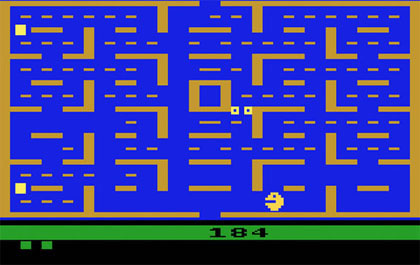
Please excuse the history lesson, but I had to keep all that in mind while looking at the 2600 port to keep the assessment fair. I am extremely familiar with the arcade original, and I know the Atari 2600 was incapable of matching it. My concern was whether the port could stand on its own. Simply put, it couldn't.
The maze is blocky and boring. It reeks of lazy design. The maze layout doesn't kill the game, but it doesn't do it any favors, either. I could forgive Pac-Man not being a perfect circle; few Atari 2600 games could make a circle that wasn't a jagged mess. However, not even programming Pac to turn his mouth up or down is just lazy. I have no qualms about the dots becoming wafers, and I can even forgive the fruit in the middle becoming a two-tone square "Vitamin." Their roles were faithfully handled. I can even forgive the escape ports moving to the top and bottom of the screen rather than remaining on the sides.
What I won't forgive are the ghosts. Because of RAM limitations, each of the four ghosts can only be on screen one frame at a time, creating a horrible case of flicker that can provide headaches in minutes. Also, anyone who had played the arcade version knows the distinct AI patterns of Blinky, Pinky, Inky, and Clyde. Since 2 kb wasn't enough to provide multiple AI routines, all four ghosts have AI that feels like a mix of Blinky (furiously chase Pac-Man) and Clyde (aimlessly wandering around). Since all four ghosts are colored the same, I guess having four distinct AI's wouldn't make sense. All the same, the ghosts are the primary thing that keep the Atari 2600 port from standing on its own.
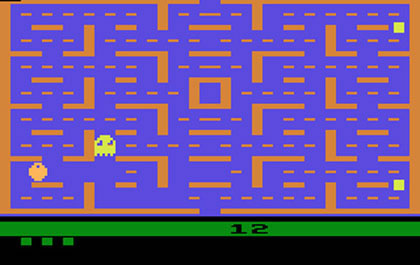
The sound design is serviceable enough, though I miss the "wakka-wakka-wakka" of the original. The limited sound effects are decent enough and unobtrusive. The one exception is the four-note tune that plays at the start of each turn. It's so loud and scratchy that I have to check to make sure my ears aren't bleeding.
For all the talk of "bringing the arcade home," the Atari 2600 was incapable of delivering arcade perfect experiences (save for Pong). I could accept imperfection if the resulting port was still fun. Pac-Man lost all the appeal that the arcade version had, and it wasn't enjoyable enough to stand on its own merits. I could accept that the circumstances weren't ideal for Tod Frye (too short a development calendar and too small a cartridge), and at least the game is functional. However, this port is simply not fun. At a time when you could get a faithful port of Pac-Man on your smartphone, don't waste time with this one. It may not be as bad as its reputation suggests, but it's bad enough.
Back in the early 1980s, Pac-Man was everywhere, thanks to the phenomenally successful arcade game. Among other things, there were plushies, cereal, a Saturday morning cartoon series and even a Top 40 pop song ("Pac-Man Fever"). When Atari got the exclusive rights to port Pac-Man, blocking Mattel and Coleco and forcing them just to create copycats, it was one of the biggest coups of the era. One would naturally think that Atari would pull out all the stops to create a faithful rendition under those circumstances. Unfortunately, developer Tod Frye was given only 2 kilobytes to use for the game, and it was all downhill from there.

Please excuse the history lesson, but I had to keep all that in mind while looking at the 2600 port to keep the assessment fair. I am extremely familiar with the arcade original, and I know the Atari 2600 was incapable of matching it. My concern was whether the port could stand on its own. Simply put, it couldn't.
The maze is blocky and boring. It reeks of lazy design. The maze layout doesn't kill the game, but it doesn't do it any favors, either. I could forgive Pac-Man not being a perfect circle; few Atari 2600 games could make a circle that wasn't a jagged mess. However, not even programming Pac to turn his mouth up or down is just lazy. I have no qualms about the dots becoming wafers, and I can even forgive the fruit in the middle becoming a two-tone square "Vitamin." Their roles were faithfully handled. I can even forgive the escape ports moving to the top and bottom of the screen rather than remaining on the sides.
What I won't forgive are the ghosts. Because of RAM limitations, each of the four ghosts can only be on screen one frame at a time, creating a horrible case of flicker that can provide headaches in minutes. Also, anyone who had played the arcade version knows the distinct AI patterns of Blinky, Pinky, Inky, and Clyde. Since 2 kb wasn't enough to provide multiple AI routines, all four ghosts have AI that feels like a mix of Blinky (furiously chase Pac-Man) and Clyde (aimlessly wandering around). Since all four ghosts are colored the same, I guess having four distinct AI's wouldn't make sense. All the same, the ghosts are the primary thing that keep the Atari 2600 port from standing on its own.

The sound design is serviceable enough, though I miss the "wakka-wakka-wakka" of the original. The limited sound effects are decent enough and unobtrusive. The one exception is the four-note tune that plays at the start of each turn. It's so loud and scratchy that I have to check to make sure my ears aren't bleeding.
For all the talk of "bringing the arcade home," the Atari 2600 was incapable of delivering arcade perfect experiences (save for Pong). I could accept imperfection if the resulting port was still fun. Pac-Man lost all the appeal that the arcade version had, and it wasn't enjoyable enough to stand on its own merits. I could accept that the circumstances weren't ideal for Tod Frye (too short a development calendar and too small a cartridge), and at least the game is functional. However, this port is simply not fun. At a time when you could get a faithful port of Pac-Man on your smartphone, don't waste time with this one. It may not be as bad as its reputation suggests, but it's bad enough.
HOME |
CONTACT |
NOW HIRING |
WHAT IS DEFUNCT GAMES? |
NINTENDO SWITCH ONLINE |
RETRO-BIT PUBLISHING
Retro-Bit |
Switch Planet |
The Halcyon Show |
Same Name, Different Game |
Dragnix |
Press the Buttons
Game Zone Online | Hardcore Gamer | The Dreamcast Junkyard | Video Game Blogger
Dr Strife | Games For Lunch | Mondo Cool Cast | Boxed Pixels | Sega CD Universe | Gaming Trend
Game Zone Online | Hardcore Gamer | The Dreamcast Junkyard | Video Game Blogger
Dr Strife | Games For Lunch | Mondo Cool Cast | Boxed Pixels | Sega CD Universe | Gaming Trend
Copyright © 2001-2025 Defunct Games
All rights reserved. All trademarks are properties of their respective owners.
All rights reserved. All trademarks are properties of their respective owners.










